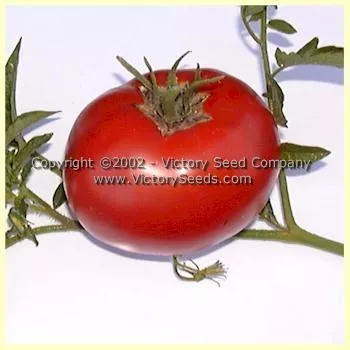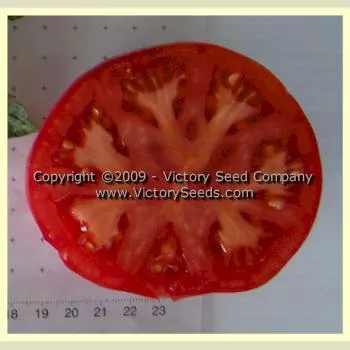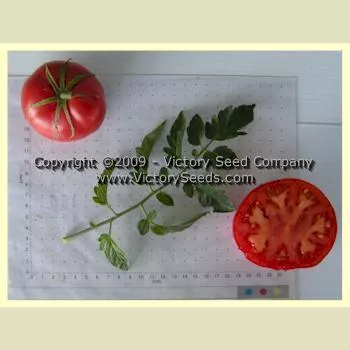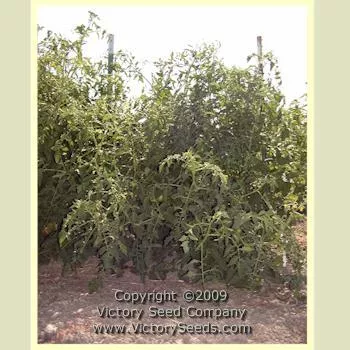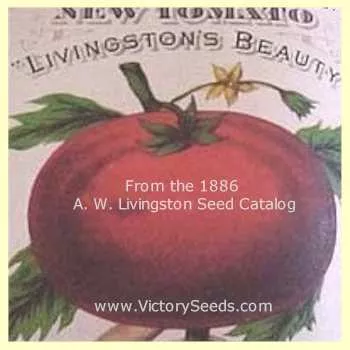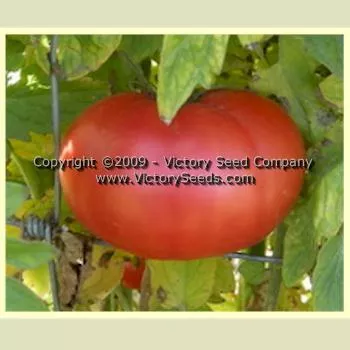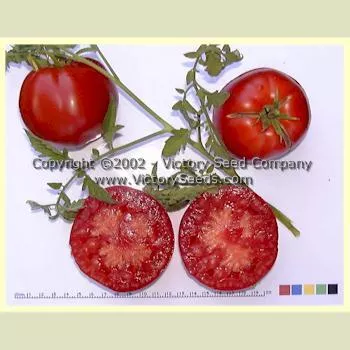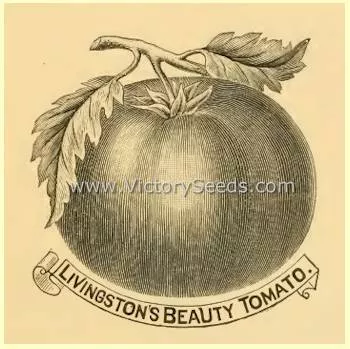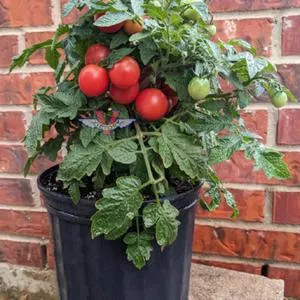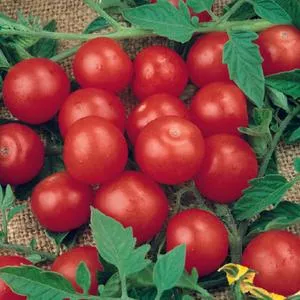







Livingston's Beauty Tomato
Solanum lycopersicum
Price: $3.45
SKU: 3400791VERY IMPORTANT NOTE: This variety will be available again in early January, 2026. Please signup below to be notified when it becomes available. Click here to learn more about our seasonal products.
80 days, indeterminate - The regular leaf plants of Livingston's 'Beauty' are vigorous, dense, and productive. Its fruit are a deep pink color, average four to eight ounces in weight, are smooth-skinned with some minor ribbing, and as the name implies, very beautiful.
As described by Alexander W. Livingston, 'Beauty' tomato fruit are, "The greatest of all Purple-Colored Home Market Sorts. Strong Grower, Very Productive. Large, Smooth and Early."[1] In his autobiographical work entitled, "Livingston and the Tomato," Mr. Livingston further describes 'Beauty' as:
As described by Alexander W. Livingston, 'Beauty' tomato fruit are, "The greatest of all Purple-Colored Home Market Sorts. Strong Grower, Very Productive. Large, Smooth and Early."[1] In his autobiographical work entitled, "Livingston and the Tomato," Mr. Livingston further describes 'Beauty' as:
"My labor was rewarded with what I claim to be THE CROWN JEWEL OF THEM ALL. It has a stouter stalk than the Acme; heavier foliage, that protects it from the scalding hot sun, is slightly darker in its purple color [ed. pink]; almost, if not equally, as early, and much larger than Acme, being deeper through from stem to blossom ends. It is a constant bearer, "holding up" its size on till the frosts kill the vines."[2]
His sixth tomato introduction, it was bred and introduced by A. W. Livingston in 1886.[2]
Fruit Color: Pink
Fruit Color: Purple
Special Groups: Livingston Tomatoes
Special Groups: "Epic" Tomatoes
Harvest Timing: Main Crop / Mid-Season
Fruit Color: Purple
Special Groups: Livingston Tomatoes
Special Groups: "Epic" Tomatoes
Harvest Timing: Main Crop / Mid-Season
Although the name of this variety contains a modern company's name, the seed we are offering is in no way sourced from, "owned by" or connected with that company. The name is simply the historically accurate, common name for the variety giving credit to the seedsman that originally released it.
Sow seeds indoors (do not direct sow into the garden), using sterile seed starting mix, 6 to 8 weeks before your last expected frost date. Plant 1/4" deep, water lightly but keep moist until emergence.
Full light and cooler temps (60° to 70°) will help to prevent the seedlings from becoming too leggy. If plants become rootbound before you can safely set them into the ground, transplant them into larger pots.
Harden off plants before planting outside. Young plants are very susceptible to frost and sunburn damage. Avoid too much nitrogen. Water evenly but not in excess.
Click here to view our full tomato growing guide.
Full light and cooler temps (60° to 70°) will help to prevent the seedlings from becoming too leggy. If plants become rootbound before you can safely set them into the ground, transplant them into larger pots.
Harden off plants before planting outside. Young plants are very susceptible to frost and sunburn damage. Avoid too much nitrogen. Water evenly but not in excess.
Click here to view our full tomato growing guide.
Informational References:
- "Livingston's Seed Annual," A. W. Livingston's Sons, Columbus, Ohio,1886.
- "Livingston and the Tomato: Being the History of Experiences in Discovering the Choice Varieties Introduced by Him with Practical Instructions for Growing," A. W. Livingston, 1893, pages 31-33.
Customer Reviews:
Do you have experience with this one? 📝 📣 Write a review!
No reviews have been posted yet.

